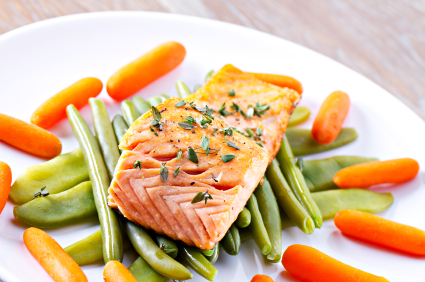Do You Suffer From Portion Distortion?
The restaurant was beautiful. The menu was multi-course, prix fixe French bistro fare. What an enjoyable evening of good friends and good food. But on the way to the parking lot it became apparent that not everyone was happy. Seems the guys took exception to the size of the portions. Has this ever happened to you? Why is enough no longer enough?
We live in a super-size society. No matter what we are doing or getting, we want the upgrade; the bigger one. Remember when the Big Gulp seemed big? Not anymore. Now it's considered just a normal size and we have the Super Big Gulp.
We are suffering from "Portion Distortion". We expect our plates to be full. In fact, the higher it's piled the better. All-you-can-eat buffets? We're there!
What happens if we go to a restaurant that serves us modest portions? As we're walking to our car we start complaining about not getting our money's worth, just like the example at the start of this article.
Does getting our money's worth include heart disease and diabetes?
The "bigger is better" philosophy should be limited to, say...diamonds! It doesn't work for our meals.
As a result of this super-sizing, the U.S. has become home to the most obese people in the world. Not a good designation. Obesity is the second leading cause of death in the U.S., second only to smoking, but that gap is closing quickly.
Over 4,000 people die every day from heart disease, with 70% of them being overweight. Obese people are twice as likely to suffer from hypertension. Of people with Type 2 diabetes, 80% of them are obese.
As a society, we are slowly eating ourselves to death.
It's time to take a close look at our plates.
Here are a few suggestions to controlling portions when eating out:
1. Ask your server to bring a take-out container with your order. Box up half your meal before you start eating.
Never super-size your order. Restaurant portions are already quite large.
2. Ask if you can purchase the lunch entrée for dinner. You may be surprised how compliant a restaurant can be!
3. Skip the buffets. An all-you-can-eat buffet may seem like a good deal at the time but overeating is never good in the long run.
Readjust your perspective of what constitutes a portion. To help you with that, here's some help on visualizing what portion sizes look like:
One cup raw or cooked vegetables: one cupped hand
Three ounces beef, pork or chicken: a deck of cards
Four ounces fish or shellfish: checkbook
Half cup cooked cereal, pasta or rice: ½ a tennis ball
Half cup cooked beans: a light bulb
Teaspoon butter: a dime
I stumbled upon an article the other day about a product called a portion control plate. The plates are marked into sections, or divided into compartments, designated to be filled with different types of food. There are large areas for vegetables and much smaller areas for everything else. Some of these products are divided into three sections - the largest meant to hold a cup of vegetables, another to hold half a cup of potatoes, pasta or rice, and the third to hold 3 ounces of meat, poultry or fish. One version is divided into eight compartments: two teaspoon-size, two tablespoon-size, two that hold a cup each, one that holds two-thirds cup and one that holds 6 ounces. It comes with an instruction manual that lists recommended amounts of various foods.
There is a debate as to whether these plates with impact our waistlines, but the fact that there is even a market for this type of thing says something about the way our society eats. One thing these plates can do for us is to help us readjust our idea of what constitutes a portion. And that's a good start.
-
Chinese Herbs: A Different Approach To Hair Loss Treatment
There is no doubt about no one wants to lose their hair. If you have i
-
How A great deal Do Bariatric Lap-Band Surgeries Typically Cost?
The expense of bariatric Lap-Band surgeries can vary significantly bas
-
Weight Loss Success: 7 Slim Down Secrets
Weight Loss Tips will help you a lot in
-
Paying For Gastric Bypass Surgery
For those that qualify for the procedure known as gastric bypass surge
-
Top 3 Food Essentials You Wouldn’t Expect
It is common knowledge that you need to have a variety of foods
-
History Of The Adjustable Gastric Banding Procedure
Gastric banding has emerged as an important tool in the treatment and
- DON'T MISS
- 10-Minute Huevos Rancheros
- Hoodia Feedback Encouraging
- Should you drink only when thirsty?
- Making Natural Weight Loss Work For You
- La Jolla Weight Loss Programs
- Atkins Diet Good Or Bad The 6 Steps Analysis
- Diet Food Home Delivery – Benefits Of Using A Diet Delivery Service To Lose Weight
- What You Need is An Easy, Step-by-Step Guide to Losing Fat
- DHSS Releases Report On Bariatric Surgery In New Jersey
- How To Lose Belly Fat Fast And Lose Love Handles Fast




